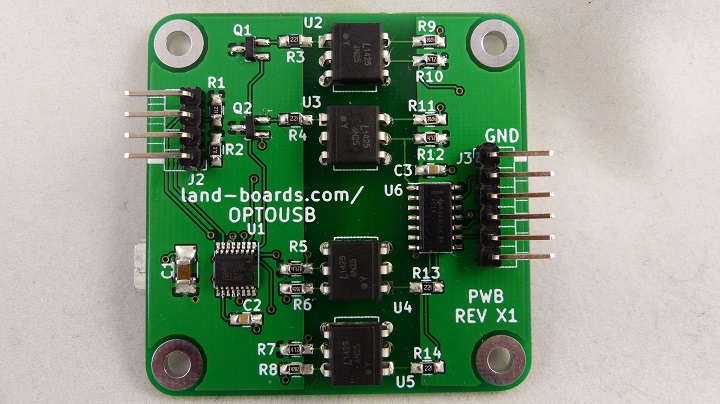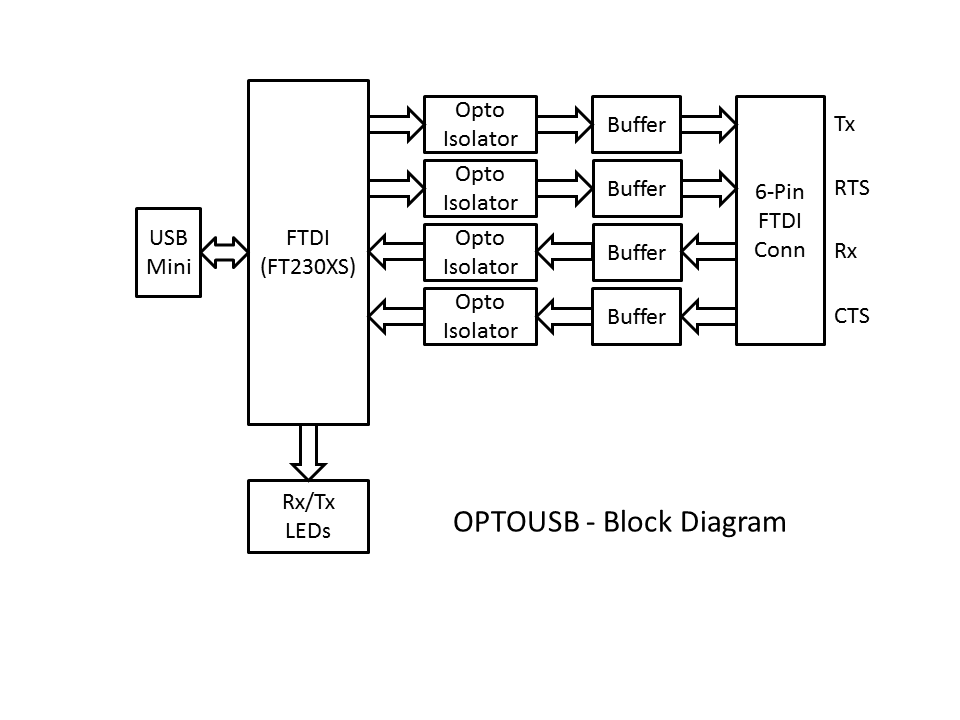OPTOUSB
Features
- USB to TTL level Serial (FTDI) Interface
- Genuine FTDI FT230XS part
- Standard FTDI drivers
- Buffered lines on the TTL level side
- Schmidt Trigger
- Voltage level hysteresis
- Improved slew rate
- Schmidt Trigger
- OptoIsolated Connections
- Transmit, Receive, RTS, CTS
- Configured for High Speed Serial
- The Host USB connection is independent of the state of the FTDI side of the interface
- Host side can communicate with the USB host whether or not the target is even powered up
- Target power on/off doesn't cause a USB disconnect - handy for debug
- Fast operation
- 3.3V or 5V FTDI voltage (order option)
- Transmit/Receive LED Connectors
- On-board LED resistors
- 49x49mm card
- (4) #4 Mounting Holes
Block Diagram
Separate Power Domains
The OPTOUSB card has two distinct power domains. One of the domains is the USB side where the power comes from the USB connector/cable. The other power domain is on the TTL side where the power comes from the FTDI connector. This is unlike "normal" FTDI interfaces where the USB connection can power the FTDI side. This is the purpose of the optical isolation - to isolate the ground of the USB side from the target (FTDI) side. Connectors J1 - Mini USB Connector Standard USB Mini connector J2 - Transmit/Receive LED connections PUP0 - LED Pullup to USB Power TXLED - Transmit LED PUP1 - LED Pullup to USB Power RXLED - Receive LED J3 - FTDI Connector Signals are references to external system GND RTS (In to card) VCC (3.3V or 5V) - Power must be supplied to this pin Receive (Out from card) Transmit (In to card) CTS (Out from card) Drivers FTDI Drivers Layout OPTOUSB-CAD-X1.PNG
Transfer Rate Characterization LTSpice Simulation results 8.6uS per bit = 115,200 baud OPTO-USB LTSpice Simulation.png
Card Test UUT 5V Power Supply Loopback/FTDI Cable Pin 1 = Ground (5V Supply) Pin 3 = Vcc (5V Supply) Pin 2 - Pin 6 RTS/CTS Loopback Pin 4 - Pin 5 Tx/Rx Loopback Run puTTY Run Device Manager to determine COM port Set baud rate to TBD (115,200?) Loopback test Rework - Rev X1 PWBs OPTOUSB_Rev_X1_Rework


